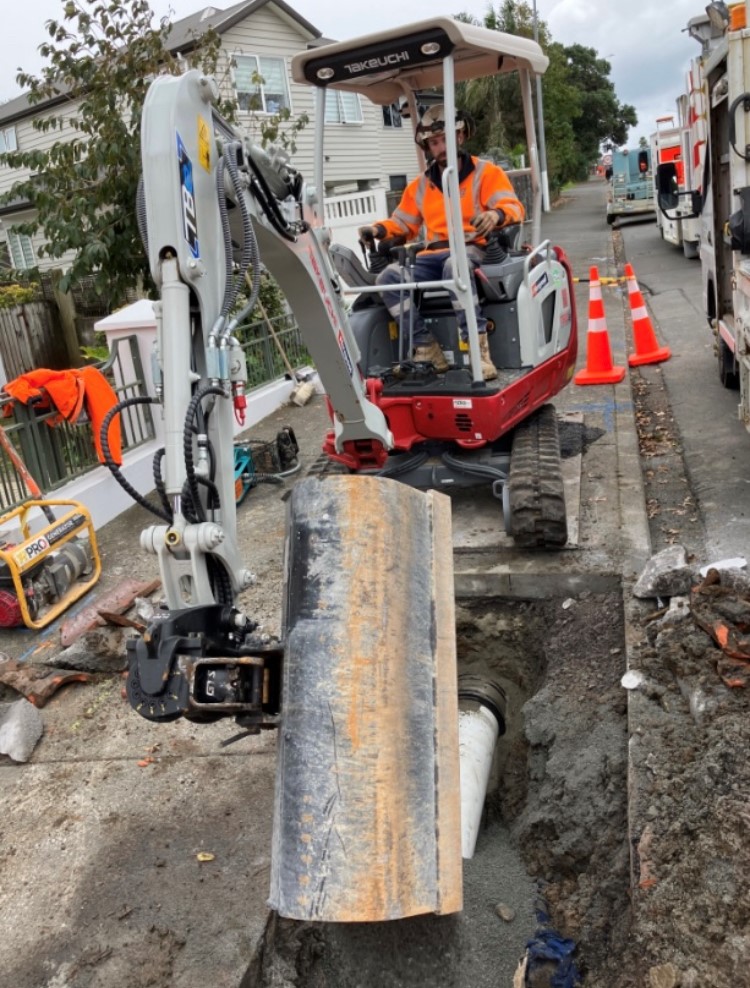As the story goes, when digging out a drain the “little yellow digger” got trapped in the mud. It called for help and a “bigger digger” came to the rescue.
But bigger is not always better when it comes to stormwater maintenance, a little red electric digger will do the job just as well, slashing carbon outputs at the same time!
For the first time, Auckland Council’s Healthy Waters stormwater team is trialing an electric digger on its maintenance operations, a first in the southern hemisphere.
Auckland Council’s Head of Sustainable Outcomes Tom Mansell says one of the biggest sources of emissions from stormwater maintenance and capital works programmes is CO2 from diesel trucks and diggers.
“These emissions are classified as Scope 3 emissions for Auckland Council. This means we don’t create the emissions ourselves rather they are created by suppliers we engage in our supply chain, but it still counts as part of our overall carbon footprint.
“Reducing Scope 3 emissions can be a complex challenge as they are outside our direct control, however, as a department with significant purchasing power, we can take a proactive approach to collaborating with our contractors to identify opportunities to reduce emissions.”
Fulton Hogan is one of those contractors. They’re trialling the first electric digger in the country on some of Auckland Council’s maintenance projects excavating soil, removing debris, clearing blockages and repairing pipework in the stormwater network damaged by the floods.
Fulton Hogan’s Stormwater Operations Manager Mark Haywood says the digger is a no-brainer from an environmental perspective.
“Apart from the CO2 reduction achieved in comparison to a diesel engine, the digger has demonstrated the capacity to mitigate noise and air pollution.
“There are so many benefits to an electric digger; it is silent on the job which makes for easy on-site communication, and it is perfect for night work and where there are noise restrictions.”

Initial trials are proving the machine has comparable power to a diesel engine and first signs suggest it will be perfect for tunnelling as it can manoeuvre in tight spaces and without generating air pollution.
Its operation is still in its infancy as its ability to handle different soil types, depths, and density is currently still being tested. Additionally, the battery life is still being evaluated to assess its capability to sustain operations throughout a standard workday without frequent recharging.


